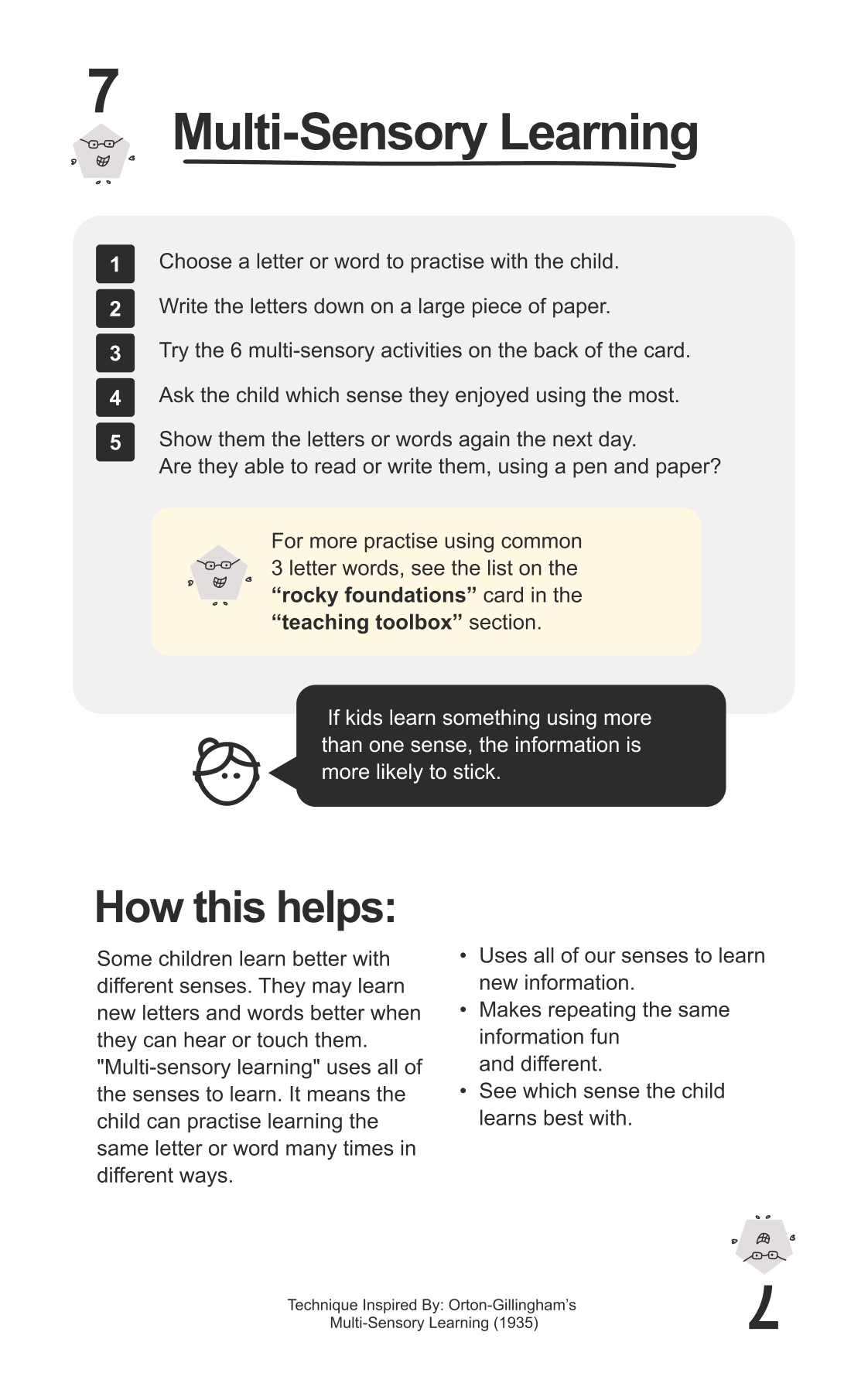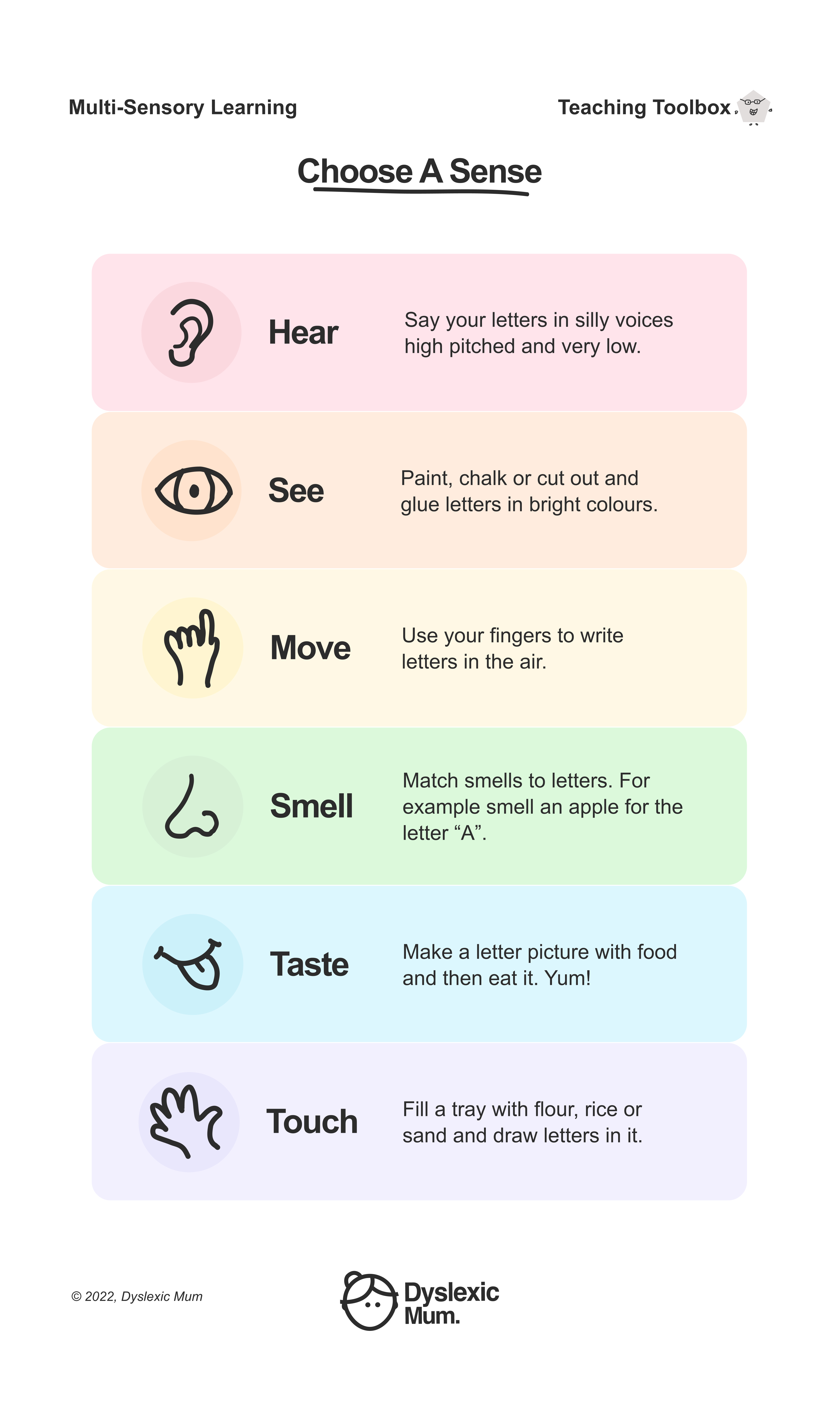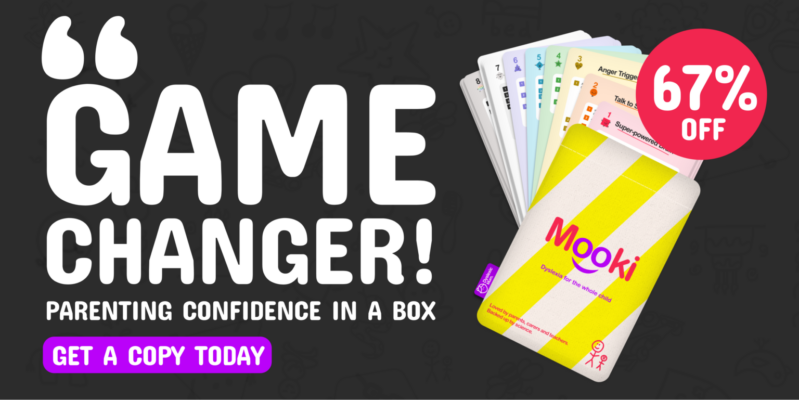Your basket is currently empty!
Learn how to help a dyslexic child by using ‘Multi-sensory learning‘ methods to make learning fun.
Multi-sensory learning uses the whole body to learn. By hearing, seeing, and moving, a dyslexic child uses all their senses to learn.
A dyslexic child may find that they learn better by using a particular sense. For example, they may enjoy using touch, such as making a clay model of a word they struggle to spell.
Multi-Sensory Learning Card


Multi-sensory dyslexia friendly learning
Dyslexia Mum shares how multi-sensory learning made a difference for her child.
“Sometimes, as a mum, it feels like my child just plays all day at school. When I ask her what she learned, she replies, ‘We painted and made things with cardboard.’ It seems like she isn’t learning to read and write.
Watch this clickable video to learn more, ‘What is multi-sensory learning?’.
When using the ‘Multi-sensory learning’ card above, follow these tips.
- Get Creative – Use items from home to help your child learn. Spell words with teddy bears, cutlery, or pasta shapes.
- Favourite Sense – If your child has a favourite sense, plan activities around it. For example, if they enjoy tasting, bake letter-shaped biscuits and spell words before eating.
- Rule of 10 – A dyslexic child may need up to 10 tries to learn something new. Plan 10 multi-sensory activities to teach a new word. Check the “Rule of 10 card” for ideas.
- Word Lists – Use multi-sensory methods to learn these “Word lists” of common words. If your child can read and write all the words on the lists, they will build a strong foundation in English.
Helpful blog posts
- Teach a dyslexic child to read and write
- Hard words for dyslexic children to read
- 8 Multi-sensory techniques for reading
- Quick facts multi-sensory learning
- Multi-sensory learning in classroom
Designed to help dyslexic children Mooki Cards. Complete with 56 cards and storage wallet. Perfect for using at home or in the classroom. Order your Mooki Cards here!

